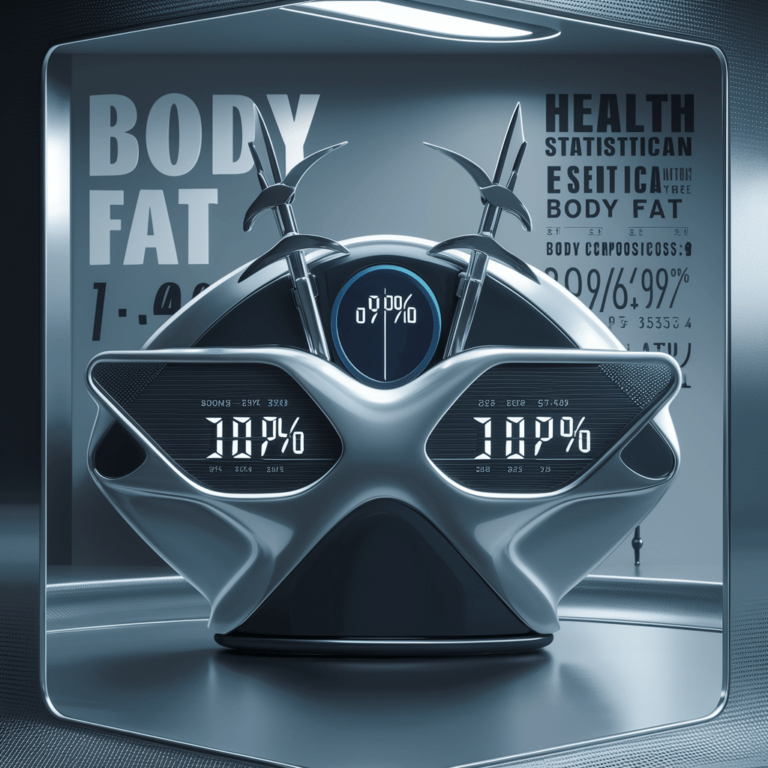Body Fat Calculator
Introduction to Body Fat Calculator
In the quest for a healthier lifestyle, understanding one’s body composition is paramount. A crucial component of this understanding is body fat percentage. However, accurately determining body fat percentage is not always straightforward. This is where body fat calculators come into play, offering a convenient way to assess and monitor body fat levels.
Understanding Body Fat Percentage
What is Body Fat Percentage?
Body fat percentage refers to the proportion of fat mass in relation to total body weight. Unlike body mass index (BMI), which only considers weight and height, body fat percentage provides a more accurate assessment of overall health and fitness.
Importance of Knowing Body Fat Percentage
Knowing your body fat percentage is essential for several reasons. It serves as a better indicator of health risks associated with excess body fat, such as heart disease, diabetes, and metabolic syndrome. Additionally, understanding body fat percentage can help individuals set realistic fitness goals and track progress more effectively.
How Body Fat Calculators Work
Types of Body Fat Calculators
Body fat calculators utilize various methods to estimate body fat percentage. These methods range from simple equations based on measurements like waist circumference to more advanced techniques involving bioelectrical impedance analysis (BIA) or dual-energy X-ray absorptiometry (DEXA).
Common Metrics Used in Body Fat Calculations
Key metrics used in body fat calculations include age, gender, height, weight, waist circumference, and sometimes hip circumference. These metrics are input into the calculator, which then applies specific formulas or algorithms to estimate body fat percentage.
Accuracy and Limitations of Body Fat Calculators
Factors Affecting Accuracy
While body fat calculators can provide useful estimates, their accuracy may vary depending on factors such as hydration levels, muscle mass, and individual differences in fat distribution. Additionally, certain calculators may be more accurate for specific demographic groups or body types.
Other Methods for Measuring Body Fat
For those seeking more precise measurements, alternative methods such as skinfold calipers, hydrostatic weighing, and air displacement plethysmography offer higher accuracy but may require specialized equipment or professional assistance.
Using a Body Fat Calculator Effectively
Tips for Accurate Measurements
To obtain the most accurate results from a body fat calculator, it’s essential to follow instructions carefully and ensure consistency in measurements. This includes taking measurements at the same time of day, under similar conditions, and using accurate input data.
Interpreting Results
Once you’ve obtained your body fat percentage estimate, it’s crucial to interpret the results in the context of your overall health and fitness goals. Consulting with a healthcare professional or fitness expert can help you understand what your body fat percentage means for your individual health and wellness journey.
Benefits of Monitoring Body Fat Percentage
Regularly monitoring your body fat percentage offers several benefits. It allows you to track changes in body composition over time, assess the effectiveness of your fitness and nutrition strategies, and make adjustments as needed to reach your goals more efficiently.
Popular Body Fat Calculator Tools
Several online tools and mobile apps are available for calculating body fat percentage. These range from simple calculators requiring basic measurements to more sophisticated applications incorporating advanced algorithms and data analysis.
Comparing Body Fat Calculator Tools
When choosing a body fat calculator tool, it’s essential to consider factors such as accuracy, ease of use, and additional features offered. Reading user reviews and comparing multiple tools can help you find the one that best suits your needs.
Incorporating Body Fat Calculations into Fitness Goals
Understanding your body fat percentage can be instrumental in setting and achieving fitness goals. Whether you’re aiming to lose fat, gain muscle, or improve overall health, tracking changes in body composition can provide valuable insights and motivation along the way.
Body Fat Calculator for Different Demographics
It’s important to recognize that body fat percentage norms may vary based on factors such as age, gender, and ethnicity. Some body fat calculator tools offer customized formulas or reference ranges for different demographic groups to account for these variations.
Challenges and Misconceptions Surrounding Body Fat Calculations
Despite their usefulness, body fat calculators are not without limitations and potential pitfalls. Common challenges include inaccuracies due to factors like hydration status and muscularity, as well as misconceptions about what constitutes a healthy body fat percentage.
The Future of Body Fat Measurement
Advancements in technology, such as wearable devices and artificial intelligence algorithms, hold promise for improving the accuracy and accessibility of body fat measurement tools in the future. These innovations may enable more personalized and precise assessments of body composition.
Conclusion
In conclusion, body fat calculators offer a convenient and accessible way to estimate and monitor body fat percentage. While they may not provide perfect accuracy, they can still be valuable tools for individuals seeking to improve their health and fitness. By understanding how body fat calculators work, considering their limitations, and using them effectively, individuals can gain valuable insights into their body composition and make informed decisions to support their wellness goals.
FAQs About Body Fat Calculators
How accurate are body fat calculator tools?
Body fat calculator tools can provide estimates of body fat percentage, but their accuracy may vary depending on factors like hydration levels and muscle mass.
What is a healthy body fat percentage?
The ideal body fat percentage varies depending on factors such as age, gender, and fitness level. Generally, a healthy range for men is 10-20% and for women is 18-28%.
Can body fat calculators differentiate between fat and muscle mass?
Most body fat calculators estimate overall body fat percentage and do not distinguish between fat and muscle mass. However, methods like dual-energy X-ray absorptiometry (DEXA) can provide more detailed insights.
Are there any risks associated with using body fat calculator tools?
While body fat calculator tools are generally safe to use, it’s essential to interpret the results in the context of overall health and consult with a healthcare professional if you have any concerns.
How often should I use a body fat calculator to monitor my progress?
The frequency of body fat measurements depends on individual goals and preferences. Some people may choose to measure regularly, such as weekly or monthly, while others may prefer less frequent monitoring.

